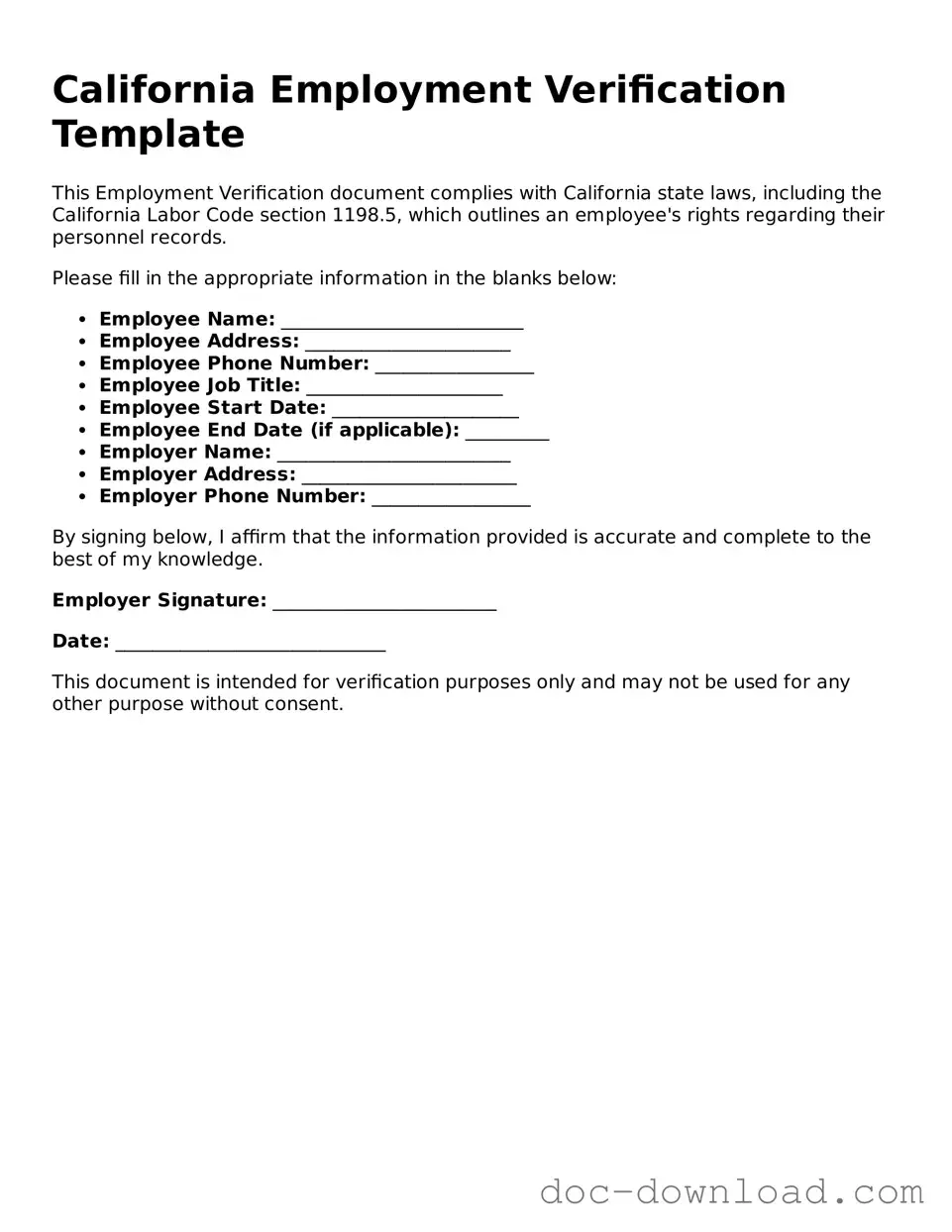The I-9 form, officially known as the Employment Eligibility Verification form, is a crucial document used by employers in the United States. Like the California Employment Verification form, the I-9 is designed to confirm an employee's identity and eligibility to work. Both forms require personal information such as name, address, and Social Security number, ensuring that employers comply with federal laws regarding employment eligibility. The I-9 must be completed by all new hires, making it a foundational document in the hiring process.
The W-4 form, or Employee's Withholding Certificate, is another important document that shares similarities with the California Employment Verification form. While the W-4 focuses on tax withholding, it also requires personal information from employees. Both forms are essential for employers to manage payroll accurately. Just as the Employment Verification form helps confirm an employee's status, the W-4 helps determine the correct amount of federal income tax to withhold from each paycheck.
The Form 1099 is used for reporting income for independent contractors, similar to how the California Employment Verification form verifies employment status. While the Employment Verification form is for employees, the 1099 form serves as a record for those who are not classified as employees. Both documents play a vital role in ensuring compliance with tax laws and helping individuals understand their financial obligations.
Understanding the documentation required for vehicle transactions is key for a seamless process. Just as the California Employment Verification form is essential for employment-related matters, the California Motor Vehicle Bill of Sale form plays a critical role in the transfer of vehicle ownership. It is important to ensure that all pertinent information, including buyer and seller details, is accurately recorded. For additional resources on this topic, you can refer to All Templates PDF for templates and guidance that may assist you in completing the required forms correctly.
The Fair Employment Practices Act (FEPA) notice is another document that aligns with the California Employment Verification form. This notice informs employees of their rights against discrimination in the workplace. Just as the Employment Verification form helps establish lawful employment, the FEPA notice ensures that employees are aware of their rights to fair treatment. Both documents are essential for fostering a respectful and compliant work environment.
The California Paid Sick Leave notice is similar in its purpose of informing employees about their rights. While the Employment Verification form confirms employment status, the Paid Sick Leave notice educates employees on their entitlement to sick leave. Both documents aim to empower employees, ensuring they understand their rights and the benefits available to them under California law.
The job offer letter often accompanies the Employment Verification form in the hiring process. This letter outlines the terms of employment, including job title, salary, and start date. Like the Employment Verification form, it serves as a formal acknowledgment of the employment relationship. Both documents are crucial for setting expectations and ensuring that both parties are on the same page from the outset.
The California Wage Theft Prevention Act notice is another document that bears similarities to the Employment Verification form. This notice informs employees about their rights regarding wages and payment practices. Both documents serve to educate employees about their rights and responsibilities, promoting a fair workplace environment. They are essential tools for compliance and employee awareness in California.
The employee handbook is a comprehensive document that outlines company policies and procedures. While it differs in scope from the California Employment Verification form, both documents play a role in establishing the employment relationship. The handbook provides employees with vital information about their rights and responsibilities, similar to how the Employment Verification form confirms their eligibility to work.
Lastly, the California New Hire Reporting form is similar in that it must be completed when a new employee is hired. This form is submitted to the state to assist in child support enforcement and maintain accurate employment records. Like the California Employment Verification form, it serves a regulatory purpose, ensuring that employers comply with state laws while confirming the employment status of new hires.
